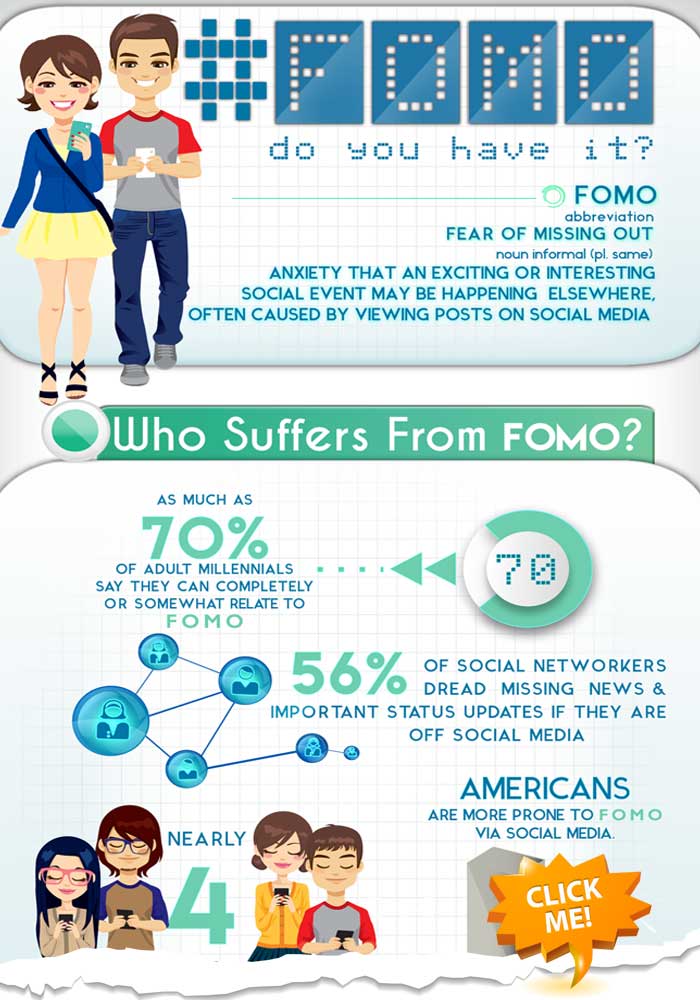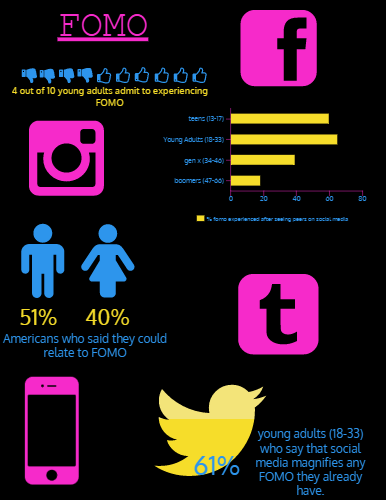Who holds the power and influence – the media or audiences?
The relationship between the media and audiences has never been more complex. The contemporary media landscape poses issues and challenges for the way that academics and commentators have traditionally theorised the nature of communication. The media has always been considered to have the capacity to influence, but now the balance of power is changing and arguments around who influences whom have become highly contested. The media and its audiences are now both thought to exercise agency; the capacity to act and exert power.
Media platforms have led to new modes of production, distribution, consumption and reception that rely on sharing commercial and user-generated content. These platforms commodify personal data by harvesting information from social media engagement. The rise of social media and surveillance capitalism has raised questions about privacy.
Laws and policies of the Australian government and self-regulation by media institutions define and maintain standards through regulatory bodies and codes of conduct, but individual interaction with other media users, as in social networks, is not subject to these constraints. As the media increasingly crosses national borders, governments struggle to maintain control over the laws and policies created for their jurisdictions. These issues pose challenges for managing and regulating the use of the media by globalised media institutions, governments and the individual.
Key Knowledge:
- the changing relationship between the media and audiences
- the influence of both the media and audiences
- how media is used by globalised media institutions, governments and individuals
- arguments, evidence and ideas to explain contemporary media influence and audience agency
- the regulation of the media and audiences in Australia
- the issues and challenges relating to regulation and control of the media
- ethical and legal issues in the media
- media language used in evaluation and discussion.
Key Skills:
- analyse and discuss the changing relationship between the media and audiences
- analyse and evaluate the extent of the influence of the media and audiences
- explain how media is used by globalised media institutions, governments and individuals
- analyse contemporary evidence, arguments and ideas to explain the influence of media and agency of audiences
- explain and discuss the regulation of the media and audiences in Australia
- analyse issues and challenges relating to regulation and control of the media
- evaluate ethical and legal issues in the media
- use media language in analysis, evaluation and discussion.
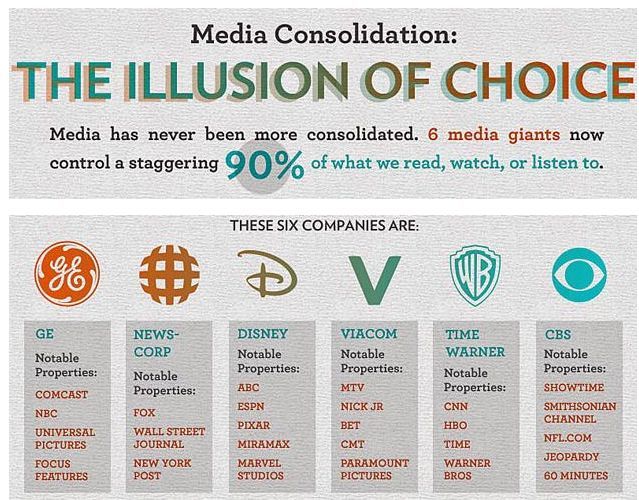
WHAT IS AGENCY AND CONTROL?
This area of study is called ‘agency & control’ because it analyses the power and influence the media is claimed to have over audiences, and that audiences are claimed to have over the media. Our experience makes it clear that the media does not have absolute power to influence audiences. We do not do everything the media suggests. On the other hand, audiences can do and exert power over the media but, their extent of their power is not always easy to determine.
This much is known……the media needs audiences and audiences need the media. The question that media theorists have tried to answer over 100 years is how and under what circumstances do they influence each other? The job of the media student is to determine how and to what degree agency and control are successfully applied by audiences and the media.
-Nelson Media, Flack 2018
Agency & Control Definitions
Agency refers to the ability to act and make choices. When a media audience, producer or institution has agency, they feel they can use a medium or platform however they choose – to express themselves, to use the media for a specific purpose, or to communicate a message.
Control refers to the ability to exert power over somebody else’s actions or choices. When a media audience, producer or institution has control, they may be able to shape messages or direct how the media is used.
Heinemann Media Third Edition - 2018
The tension between Agency & Control
Tension between these two ideas – agency and control can be seen in many different audience relationships with the media. Many social media platforms sell the illusion of agency to an audience when in fact their use of the system is tightly controlled. In turn, some audiences enjoy subverting the systems of mediums or platforms to give themselves more agency. Media institutions are often fighting for more agency in how they interact with the different regulation systems that attempt to control them.
Definitions:
POLYSEMIC: The polysemic nature of television – the factors which enable different viewers to make different senses of the same text.
PRODUCTION: The process of constructing a media product.
DISTRIBUTION: The means by which that product is shared with the audience.
CONSUMPTION: Refers to the social, cultural and technological influences over the way the audiences read media products.
RECEPTION: Refers to the way in which an audience engages with a tangible or intangible media product and the way that can influence how it is read.
Ethical Gatekeeping
As it applies to media, gatekeeping refers to the method in which information is filtered for distribution, this can be done through the internet, print or broadcasting. Due to the power that gatekeepers wield in controlling what we as the public read, hear or see, there are many ethical concerns to be considered and liberties to be safeguarded.
The Social Dilemma Trailer - A must watch for Agency & Control Research
The media as a socialising force
These days, when we think of ourselves and the media, we think about our relationship with our friends on Facebook and Instagram or we think of ourselves as audience members choosing and engaging with a film, television program, app or site. We think of ourselves as individuals, perhaps as a gamer or as a reader of a magazine or newspaper or a listener to music or a podcast. If we think about it at all, we tend to see media as a free or paid service that benefits our lives. We rarely stop to think what it means to be one of nearly 2 billion Facebook users or one of the million of Star Wars fans across the world. We think that we have complete agency over our media experiences, but do we?
Nelson Media, Flack 2018
Facebook Recommendation Search Engine
Facebook has a recommendation search engine. An Artificial Intelligence Engine that has being engineered and designed to recommend videos, advertising and memes, tailored for you that are placed directly into your News Feed. It was constructed using algorithms that track and harvest your Facebook usage and then find patterns and interests.
How can this be a problem?
Platforms such as Facebook and those alike now have the ability to sew controversy in the fabric of society. We also know that these AI’s don’t have the capacity to determine whether something is Fake News or Real. Therefore, these platforms can spread a fake narrative in a fast and cost effective way. Creating an environment where the audience have less control over our values and what we believe.
Potential future problem being: Civil War between Individuals, Groups, Countries or States.
TRUE STORY……Snowden
Edward Snowden, the idealistic young military officer who became outraged by illegal, rampant NSA surveillance techniques. He turned whistleblower by leaking classified government documents to the world press, ending up as an (accidental) asylum-seeker in Russia.
Is Snowden a hero or a traitor?
Snowden Trailer
Who is to blame?
The Bobo Doll Experiment
The Bobo Doll experiment is one of the best known studies used in an attempt to explain the way the media could influence audiences. The study was conducted by a Canadian psychologist Albert Bandura in 1961 and 1963. It claimed that children who were shown violent behaviour towards an inflatable Bobo Doll (a child's toy, designed to be knocked over - pictured in the image beside) would act accordingly. It has been used to draw links between violent imagery in the media and violent behaviour in the real world. Today, this study is not quite redundant, but it certainly struggles to factor in the vast reality of modern media. In short, the modern media has long since moved.
Media Reframed - Cambridge 2018
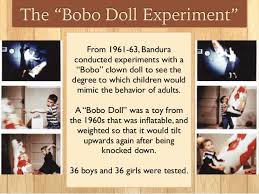
The act of searching online is referred to with one word: Googling. There is no other company that symbolizes the transition from old to new media like Google. While not necessarily a media company as such (although its own Youtube), Goggle has the capacity to read all of your data and determine the direction of your search. Google’s success is based on the complexity of its search algorithm. When you type ‘new music’ into the Goggle search bar, it uses the data collected from your previous searches, likes and interests from pages you have visited and the data from billions of other users to predict what you are looking for before you have even fished typing. Its accuracy can both frightening and hilarious. As Goggle is the primary entry point for most media users online, its role must be considered in the whole debate of agency and control.
The users data collected by Goggle leaves that of Facebook, Youtube and Twitter in its wake. The vast majority of what is spoken and typed into Google search bar is recorded and used to your advantage in your next search and then sold to governments and institutions, who are desperate to gather the private conversations all internet users have with their keyboard.
Media Reframed - Cambridge 2018
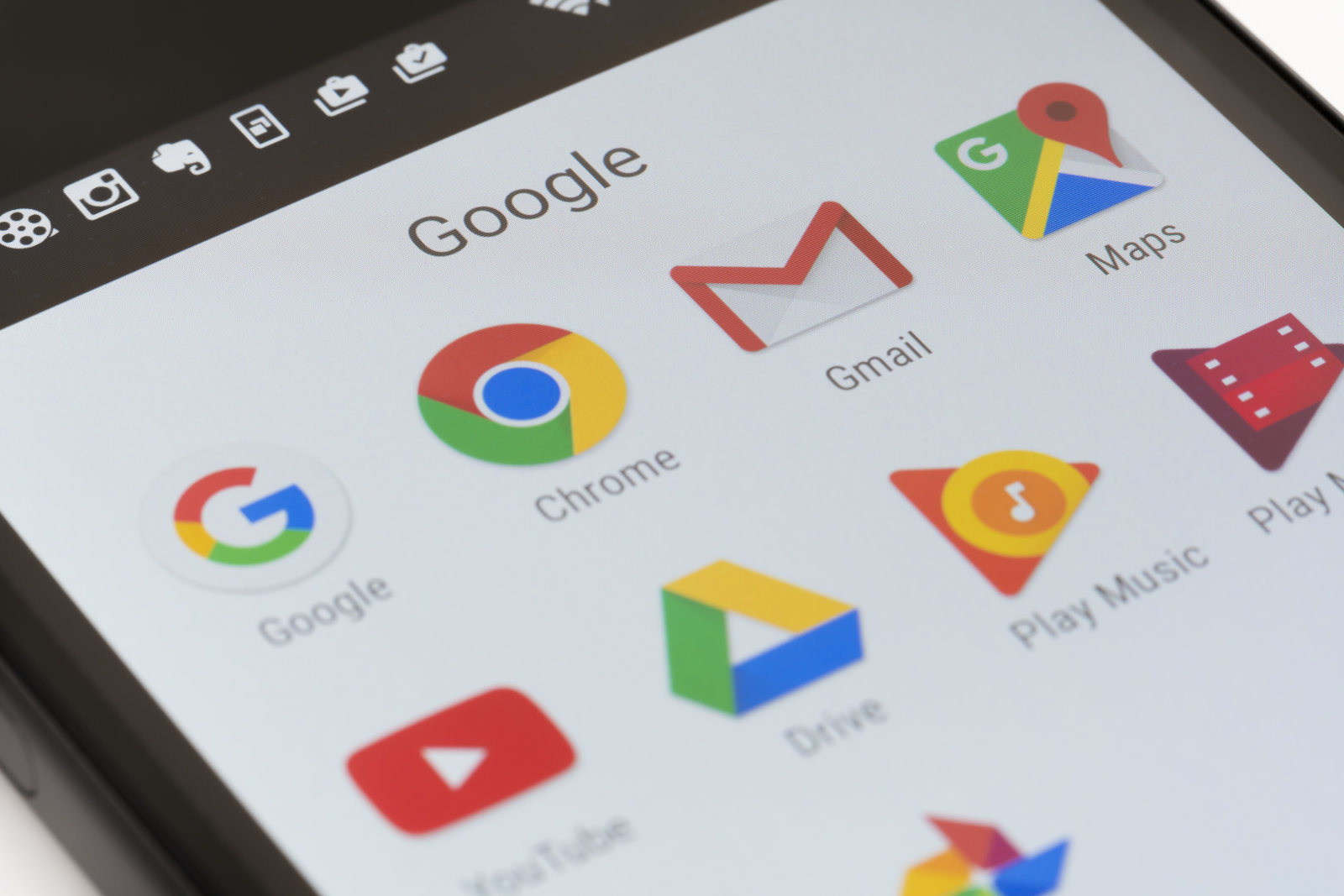


The effects of the media on audiences – Media Influence
When it comes to determining the nature and control, it is important to avoid generalisations. There are no definitive answers to any of the questions this study poses. Before the media was met with technological change, theorists and academic thinkers would attempt to explain the relationship between media products and their impact on audiences.
Before we dive into MEDIA INFLUENCE as a study we must ask ourselves these......
QUESTIONS:
1. How was the relationship between media creators and the audience once explained?
2. In a new media landscape, which elements of their work are still relevant today?
Media Reframed - Cambridge 2018

MEDIA responsible for self-esteem?
Women’s magazines and their use of underweight and Photo-shopped models have been long maligned for stirring self-esteem issues amount young women. But now, social media, with its filters and lighting and clever angles, is taking over as a primary concern among some campaigning groups and charities.
Social media sites make more than half of users feel inadequate, according to a survey of 1,500 people by disability charity Scope, and half of 18 to 34 year olds say it makes them feel unattractive.
A 2016 study by researches at Penn State University suggested that viewing other people’s selfies lowered self-esteem, because users compare themselves to photos of people looking their happiest. Research from University of Strathclyde, Ohio University of Lowa also found that women compare themselves negatively to selfies of other women.
The effects of THE BOOK
Its not just selfies that have the potential to dent self-esteem. A study of 1,000 Swedish Facebook users found that women who spent more time on Facebook reported feeling less happy and confident. The researchers concluded: “When Facebook users compare their own lives with others’ seemingly more successful careers and happy relationships, they may feel that their own lives are less successful in comparison.
But one small study hinted that viewing your own profile, not others, might offer ego boosts. Researches at Cornell University in New York put 63 students into different groups. Some sat with a mirror placed against a computer screen, for instance, while others sat in front of their own Facebook profile. Facebook had a positive effect on self-esteem compared to other activities that boost self-esteem awareness. Mirrors and photos, the researches explained, make us compare ourselves to social standards, whereas looking at our own Facebook profiles might boost self-esteem because it is easier to control how we are presented to the world.
Even if we want to avoid the site and keep our data protected, it’s not as easy as one might think. According to Roger McNamee, an early investor in Facebook, the company uses techniques found in propaganda and casino gambling to foster psychological addiction in its users – such as constant notifications and variable rewards. By keeping us hooked, Facebook is able to hold a huge amount of data on us. What is surprising, and worrying, is the derived data Facebook has – the profiles it can build of its users based on seemingly innocuous information. The author of the book Networks of Control, Wolfie Christl, noted that a patent published by Facebook works out people’s commute times by using location data from mobile apps. It then uses this and other data to segregate users into social classes.
No one can pretend Facebook is just harmless fun anymore
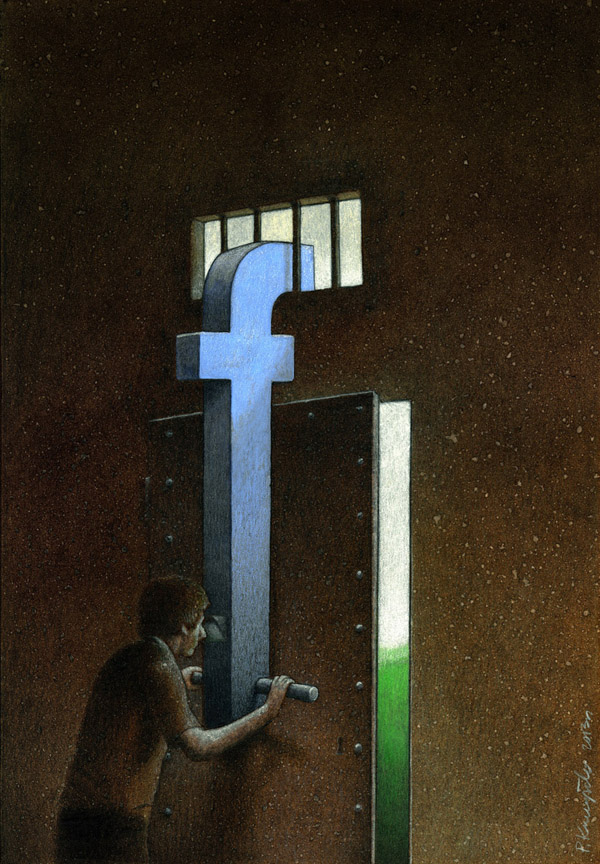
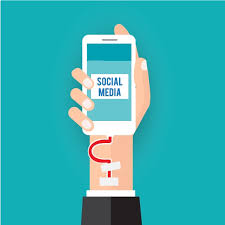
SOCIAL MEDIA……One conclusion
It is clear that in many areas, not enough is known yet to draw many strong conclusions. However, the evidence does point one way: social media affects people differently, depending on pre-existing conditions and personality traits.
As with food, gambling and many other temptations of the modern age, excessive use for some individuals is probably inadvisable. But at the same time, it would be wrong to say social media is a universally bad thing because clearly it brings myriad benefits to our lives.
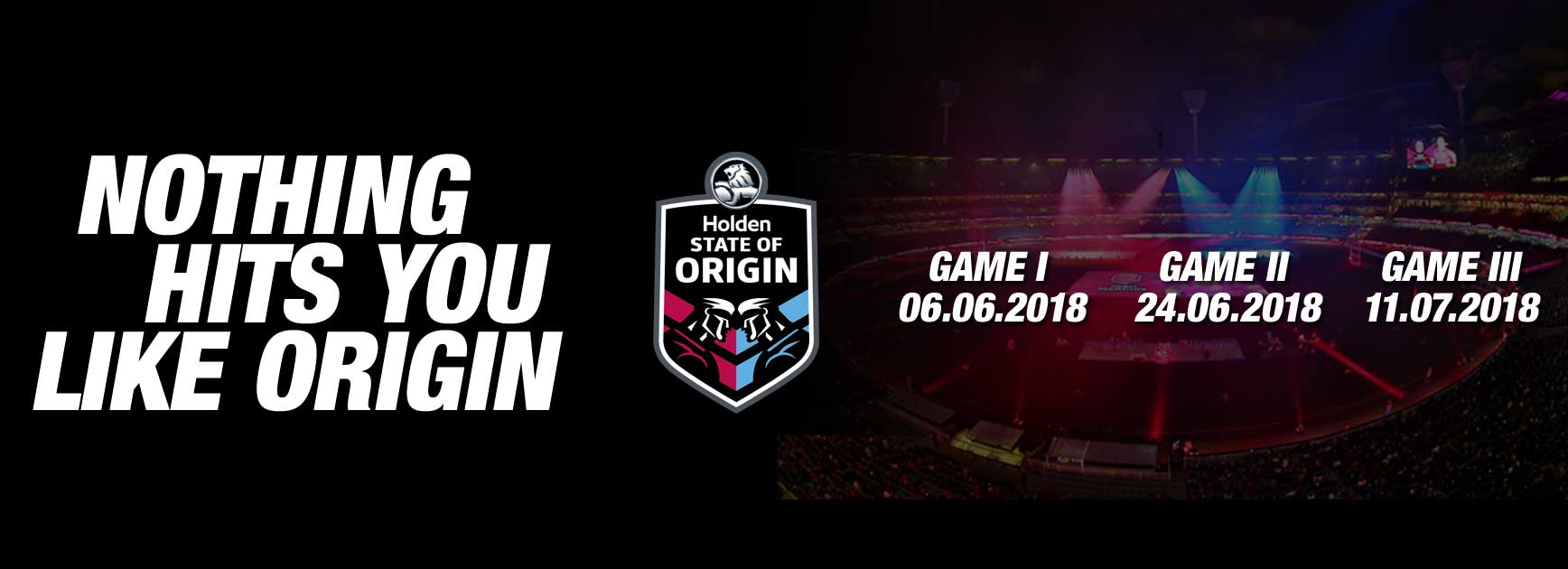
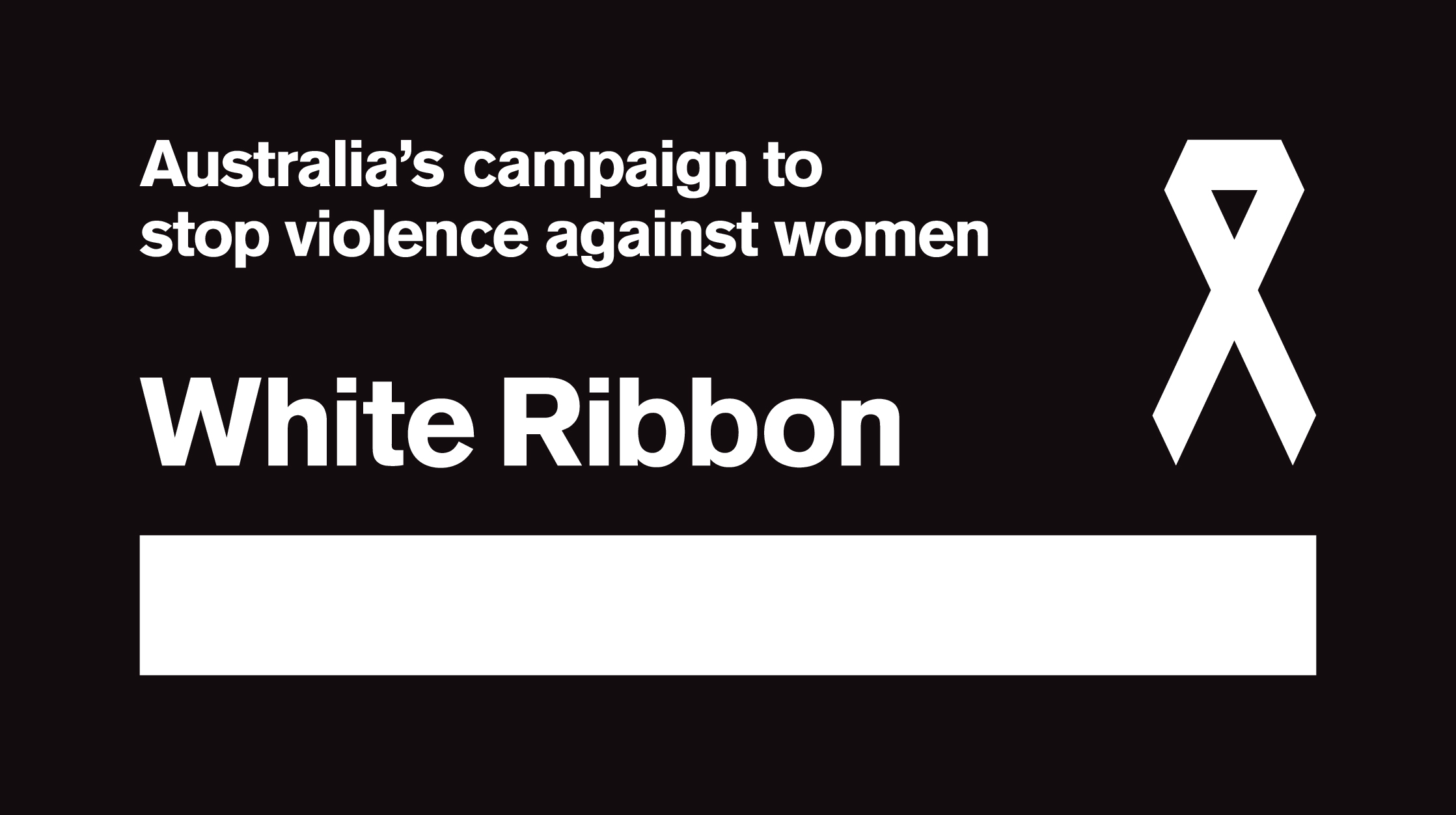
Study of New South Wales domestic violence cases reveals spike at State of Origin time
A NEW FRIGHTENING study has revealed there’s a dangerous spike in domestic violence against women and children during the annual State of Origin series.
The study has revealed a dangerous spike in domestic violence against women and children linked to the annual series between NSW and Queensland. Experts say the “disturbing findings” released today suggest the Origin’s “particular celebration of heavy drinking, masculinity, tribalism, and the toxic level of aggressive alcohol promotion have collided to encourage drinking to excess and domestic violence”.
They say the NRL more broadly has become a “battle of toxic masculinity and beer brands” where it’s hard to know where the game ends and the violence and alcohol sponsorship begins.
New data from the New South Wales Bureau of Crime Statistics and Research spanning six years from 2012 to 2017 indicates a 40.7 per cent average increase in domestic violence, and 71.8 per cent in non-domestic assaults across the state on Origin game days.
The Centre for Alcohol Policy Research at La Trobe University examined the data for recorded domestic and non-domestic assaults in NSW on Wednesday nights, from 6pm to 6am the next day for the weeks around Origin games.
Public health advocates are now calling on the NRL to acknowledge and address the issue. The data spanned 11 weeks when games are held and included Victoria as a control measure because of the low interest in rugby league in that state. Michael Livingston said the spike in cases was significant and consistent in NSW across the three-game series in each and every one of the years examined.
“In the twelve-hour window from 6pm to 6am on State of Origin game night, women and children in New South Wales are almost 40 per cent more likely to become victims of domestic violence,” Dr Livingston said.
An increase in domestic violence associated with a sporting fixture was not new — there was increase in domestic violence experienced in England during the 2010 World Cup.
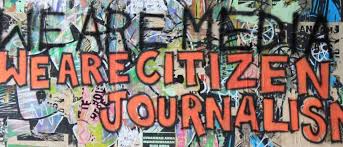

CITIZEN JOURNALISM
Citizen Journalism is the reporting of news and events by members of the public using the internet as a means to spread information.
The concept of citizen journalism is based upon public citizens "playing an active role in the process of collecting, reporting, analysing, and disseminating news and information."
SAC & EXAM QUESTION: Define and evaluate ONE major ethical implication of citizen journalism - 7 marks
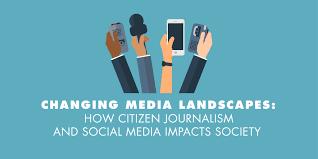
Well written response: By Student
Social networks have enabled new modes of production, distribution, consumption and reception based on the sharing of commercial and user-generated content. Describe the impact that these new modes have on the relationship between the media and its audience. (5 marks)
The development of social networks has allowed for a faster and stronger flow of news stories/events from not only established media institutions but also from the consumers of the media platforms. The ability to share news with millions of people at the click of a button has led to many prominent news outlets publishing new stories on social media. The articles are succinct and do not use complex vocabulary. This ensures that the audience (many of whom have short attention spans and require information to be provided to them quickly) consume news story after news story, spending a relatively large amount of time on the new outlets page. However, the expansion of social networks and the development of common technology has led to a phenomenon known as citizen journalism. This is the capturing and sharing of news events by the general public via social media. There has been a mixed reception to this, those who endorse it value it as it is supposed to be unbiased and transparent reporting of events. However, many audiences do not trust citizen journalism as it is very susceptible to being influenced by the biases of the citizen and furthermore, the citizens have no obligation to be objective and have no formal training in journalism or reporting. Subsequently there is a mix of audiences who trust citizen journalism and distrust the mainstream media and another portion who distrust citizen journalism and rely solely on mainstream media for their news. The only certainty is that the development of social networks has led to a saturation of news in social media which is resulting in the public becoming increasingly dissociated from the mainstream media and either unsure or dependent on citizen journalism.

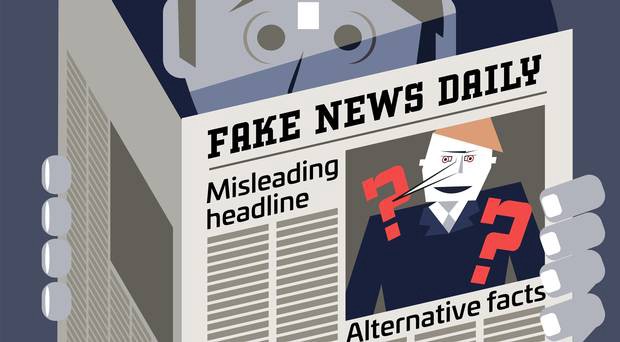
Armchair Expert
Meaning:
A person who knows a lot about a subject, but has little or no experience or real understanding of it.
This idea was brought about when legal proceedings started filming live in court rooms across America. Real cases were televised to a live audience allowing them to be known as, ‘The Armchair Expert’. This term was given to audiences whom had an opinion or set of values and beliefs based on their bias towards the evidence been shown to them via the television set.
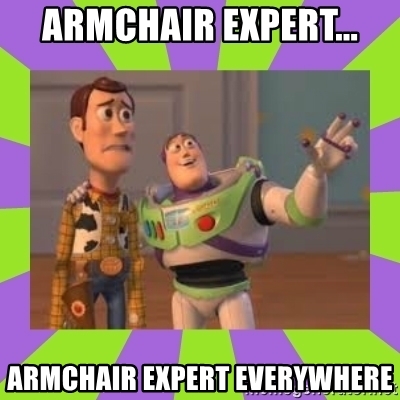
FAKE NEWS
Fake news is a type of yellow journalism or propaganda that consists of deliberate misinformation or hoaxes spread via traditional print and broadcast news media or online social media. This false information is mainly distributed by social media, but is periodically circulated through mainstream media. Fake news is written and published with the intent to mislead in order to damage an agency, entity, or person, and/or gain financially or politically, often using sensationalist, dishonest, or outright fabricated headlines to increase readership, online sharing, and Internet click revenue.
TWO QUESTIONS THAT COULD ARRISE ON THIS TOPIC:
1. Government agencies will often use media products to attempt to enact control over specific audiences. Describe one way a government has used the media and how effective they were. (4 marks)
2. If audience believe FAKE NEWS and therefore act on the information they have been provided what Communication Theory can this be linked too. Explain your response in detail. (4marks)
FAKE NEWS: Trip Advisor #1 Restaurant

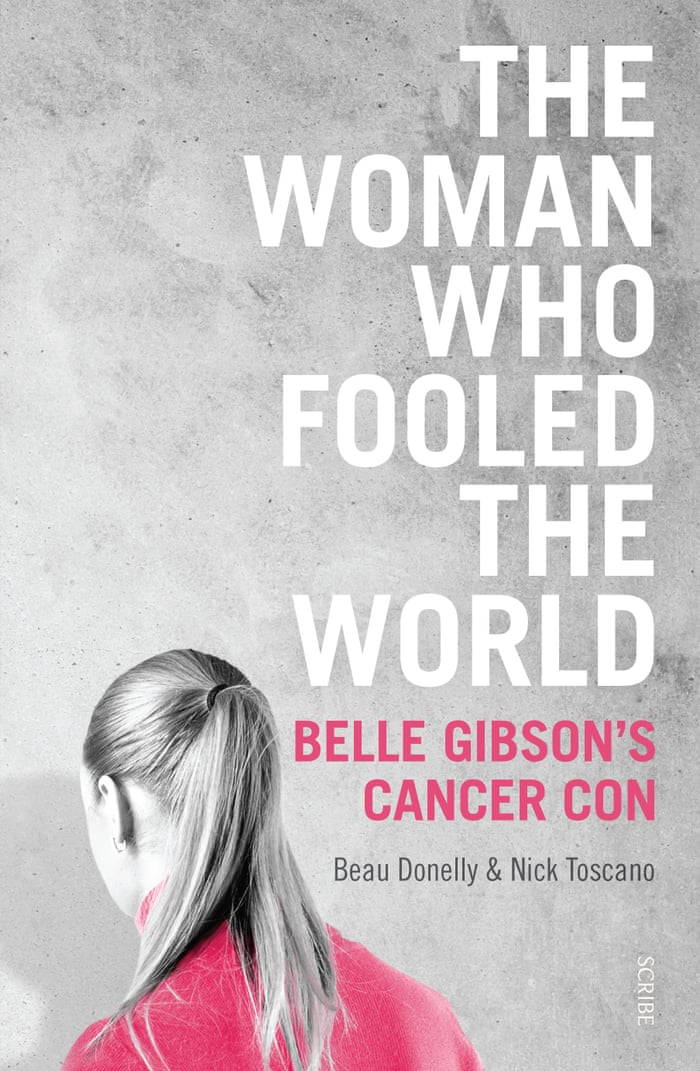
Belle Gibson’s Blog: The Wellness Pantry……Unethical example of Fake News
Evaluate the extent to which one or more ethical or legal issues have an impact on the consumption of media products. – 8 marks
Belle Gibson’s Blog arose both legal and ethical issues in 2015. Belle Gibson was a Wellness Blogger who shared through her user-generated Blog, The Whole Pantry. Belle claimed that she had survived cancer through a non-traditional approach, by taking herbal medicines rather than chemotherapy. Gibson was incredibly effective in influencing her audience and was able to sell 300,000 products from her site before 2015. However, it was later revealed that Gibson never had cancer and was simply scamming her vulnerable audience to earn money.
This incident was not just immoral but incredibly unethical as it caused thousands of Australian women to drop their chemotherapy and follow her false and misleading recommendations. This outcome caused many patients to become extremely sick and some lost their life’s.
This highlights the ethical issue of fake news being spread through user-generated content through social media platforms. Belle Gibson’s blog is not the first and will not be the last online platform to spread and make money from fake news. As a result of Gibson misleading her audience she was fined, $140,000 for breaching consumer law, however many criticise and felt that for such a crime, this penalty was too small and that she deserved jail time for her unethical conduct.

‘Snapchat Dysmorphia’ Causes People to Seek Plastic Surgery to Replicate Social Media Filters
Doctors say they’ve seen a nationwide uptick in patients seeking plastic surgery to look more like the filtered version of themselves that they’ve created using popular apps like Snapchat and Instagram.
According to researchers from Boston University School of Medicine’s Department of Dermatology, the new phenomenon, dubbed “Snapchat dysmorphia,” involves people asking plastic surgeons to reproduce the “instant fix” they see in their own smartphone-edited selfies: an airbrushed version of themselves with fuller lips, bigger eyes or a thinner nose.
Researchers called the trend “alarming” in a recent article in the peer-reviewed journal JAMA Facial Plastic Surgery, noting that “filtered selfies often present an unattainable look and are blurring the line of reality and fantasy for these patients.”
The researchers categorized “Snapchat dysmorphia” as a version of body dysmorphic disorder, a mental condition that causes people to become obsessed with perceived defects in their appearance.
Neelam Vashi, a professor of dermatology at Boston University School of Medicine and a co-author of the article, told The Washington Post that the widespread availability of photo-editing software is giving some patients unrealistic expectations about what they should look like.
The researchers’ article also notes that in 2017, 55 percent of surgeons reported seeing patients who requested surgery to look better in selfies, according to a recent survey by the American Academy of Facial Plastic and Reconstructive Surgery.
“That’s been a trend for a number of years now,” Dr. Maman says. “Obviously the more people are posting on social media, the more selfies they take, the more they’re aware of what they look like, the more concerned they are about their appearance. Just like it’s true for all these fashion bloggers and fashion Instagrammers and Snapchatters, the same is true for plastic surgery. People want to look [the best they can] and achieve the best possible results they can.”
Before the rise of social media, “if you didn’t want to share your photo with the public, you didn’t have to,” he continues.
“Now people are posting pictures of you, if you’re not doing it yourself. Overall concern for physical appearance has increased as a result of that.”
People Magazine
August 06, 2018 03:32 PM

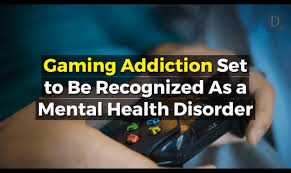
GAMING ADDICTION
Gaming addiction has become so serious the World Health Organisation has now classified it as a disease.
Experts are calling it a “modern tragedy” as overwhelmed parents fear for their lives, forced to let their children keep their devices because they get violent as soon as they attempt to remove them.
PARENTS of teens who haven’t gone to school for as long as two years because of their gaming addictions have been slammed for their efforts to stop the problem behaviour.
Logan Ford, profiled last night on 60 Minutes, is one of several teens in Australia confined to their bedrooms because of gaming addiction.
Video game addiction 'leading to irreversible brain changes in kids'
The brains of Australian children are being irrevocably shaped and changed due to extensive time spent video gaming, experts warn.
Speaking to 60 Minutes reporter Tara Brown, education coach Jill Sweatman described the impact of excessive gaming as dire and long term, leading to what is called “planned brain death”.
“That occurs from the time the child is almost born. It’s already getting rid of brain cells that are not being used,” Sweatman explained.
“What worries me most is that if so much time is devoted to just entertainment, under the auspices, the control of game designers, over a long period of time, what are we really losing?
“And those brain cells can't be gotten back in later life.”
Studies have shown that 90 percent of adolescents play video games and 15 percent show signs of addiction – physiological traits that are similar to pathological gamblers.
The World Health Organisation this year recognised gaming addiction as a legitimate disease, but it is not yet a diagnosable condition in Australia - resulting in many families struggling to cope or receive suitable treatment.
Thousands of teenagers across the nation are battling everything from social anxiety, depression and violent outbursts as their addiction with the video gaming world continues to grow.
Addiction to SEEKING behaviour
Having an addiction to screen time, whether this be via your smart phone, your computer, your video game or television, your brain is in SEEKING mood. Your brain is releasing dopamine. A drug like stimulant that asks for more. Dopamine is activated more in kids and teenagers, which is why addictive screen time behaviour is more obvious in this audience demographic.
The problem was once a psychological problem where we considered the use of screen time addictive for the brain…..however, now research is indicating that physiological changes are occurring in young people. They are psychically changing as a result of information stimulation from technological advancements.
Screenagers
Gaming Facts:
- Annually $130 Billion dollars in spent in online purchases for virtual games.
- Active gamers in the world make up one third of the population.
- More than two thirds of Australians play video games. Including 62% of all working adults.
- Today, 66 percent of Americans—more than 215 million peopleof all ages and backgrounds—play video games regularly. Three quarters of players are over 18, and the average age of a video game player is 33. Across all ages, players are about half female (48 percent) and half male (52 percent).
- 78,000 Australian children are addicted to video games. The most likely age that one becomes addicted is aged between 18 – 24.
- Australians play video games for an average 88 minutes daily.
Gaming - A different perspective - 60 Minutes
Orthorexia
Orthorexia:
An obsession with eating foods that one considers healthy.
Definition: A medical condition in which the sufferer systematically avoids specific foods that they believe to be harmful.
Orthorexia is now a recognised medical condition in Australia. This has come about in recent studies due to the increase in Social Media Usage by vulnerable people.
Incidents of depression have been linked to heavy social media use. For example, there is an increasing amount of evidence that connects the amount of time spent on Facebook with the occurrence of depression. Other studies have also suggested that the extensive use of social media by young adults has a negative impact on body image, depression, social comparison, and disordered eating. Beyond these negatives, social media sites that offer the newest superfood or latest diet fad may be just as damaging. Studies are beginning to see a correlation between disordered eating – particularly orthorexia, or an obsession with eating healthy foods that can lead to unhealthy consequences like nutrient deficiencies, social isolation and anxiety.
Although not formally recognized in the Diagnostic and Statistical Manual, awareness about orthorexia is on the rise. Being concerned with the nutritional quality of the food is not a problem and is actually a good habit to develop. However, individuals with orthorexia become so fixated on what is considered healthy eating that they actually start to damage their own well-being. Studies have shown that many individuals with orthorexia also have obsessive-compulsive disorder. High orthorexia nervosa prevalence has been found in populations who take an active interest in their health and body and is frequently comorbid with anorexia nervosa. In particular, there seems to be a link between Instagram users and signs of orthorexia symptoms.
Understandably, people use social media to discover healthy eating tips or to stay accountable to a fitness plan. But the pursuit of nutritious eating can become an unhealthy preoccupation. The pursuit of the perfect diet can lead to self-punishment and interfere with social activities. Eating disorders and disordered eating behaviours do not discriminate; they can affect women, men, girls and boys.
https://www.river-centre.org/anorexia/social-media-and-orthorexia/
Rebuttal: Instagram and Social Media platforms are designed to share stories and lifestyles. The end user has the ability to not follow or close their account.
Communication Theory:
Links to the communication theory: The Ideasvirus. The Green Movement lifestyle and healthy eating Influencers or Wellness Worriers and they like to call themselves have created a movement and Influencing the masses to follow and like their choices. This however, is making people sick according to 60 minutes.
SCREENAGERS website
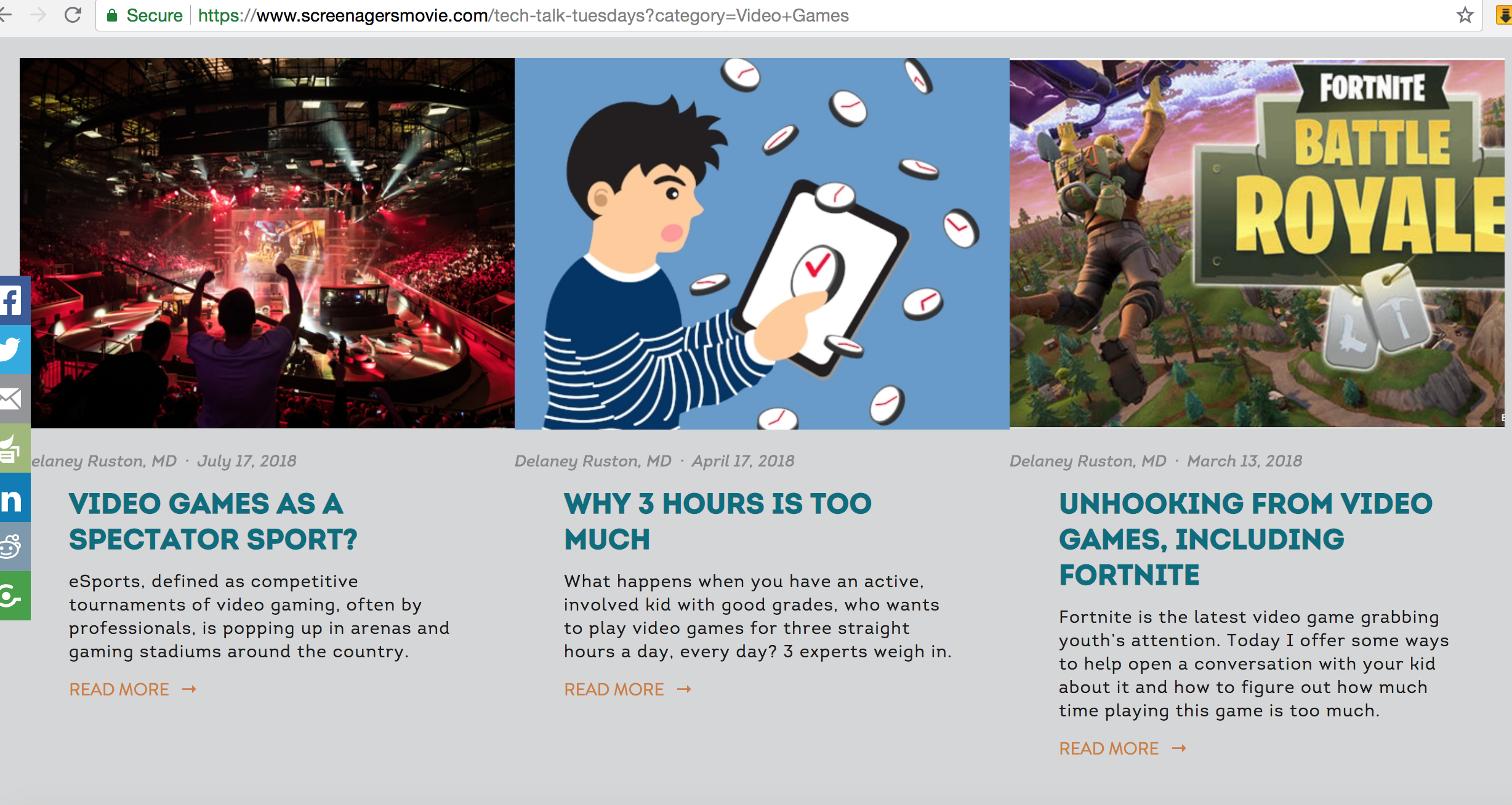
Fyre Festival
The Fyre Festival….That never happened
This documentary demonstrates the power of social media and its ability to influence thousands of people and have them call to action.
The Great Hack
NOTES: The Great Hack (The ethical issue of data surveillance)
Cambridge Analytica was a large company that collected 5000 data points on every American voter. They believed that collecting and selling this data could be used to predict behaviour in people. This raises the ethical issue of, ‘DATA RIGHTS’. If American’s don’t give permission for their data to be sold and used by corporations then we have a fundamental human rights debate.
Data has now become a Trillion Dollar industry. People are using data as a commodity and weapon to predict behaviour and get people to see the world they want. In the wrong hands this can be a major problem.
Data collection can build a psychological profile on American people. This is an unethical experiment with the psychology of an entire country.
#GetOurDataBack
“The perusables” was a term given to a bunch of American voters that the Government believed they could have them see the world they wanted. For example, use their Facebook and Google searches to predict their behaviours and create a personality profile on them. This unethical experiment on data surveillance was conducted by Cambridge Analytica and purchased by the Trump Corporation which is said to have helped Donald Trump win the election to become the President of The United States. Cambridge Analytica harvested 87 million people’s data and sold the information, which was then used for the Trump Campaign.

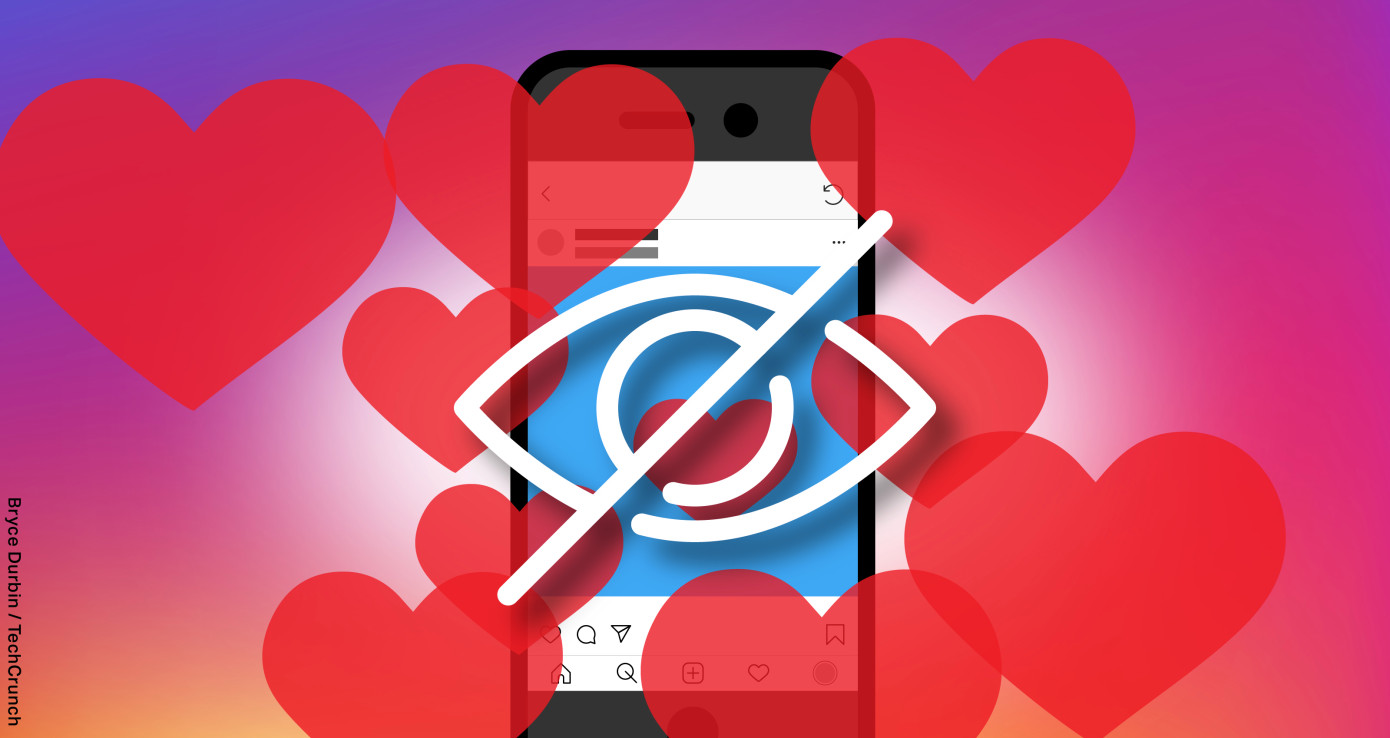
Why Instagram has really killed likes
The Sydney Morning Hearld – July 22, 2019. By Cara Waters
Instagram’s move to stop displaying “likes” on posts on the social media platform in Australia has been welcomed by entrepreneur Sarah Holloway.
“It is a great way to democratise the landscape, there are some accounts with crazy numbers that are disheartening for other users,” she says. “It’s hard to keep everyone engaged and excited with the platform if they feel crap about it all the time.”
Instagram describes the change as a “test” and is emphasising the impact on users’ wellbeing, with Instagram previously ranking as the worst social media platform for users mental health.
Mia Garlick, director of policy for Facebook in Australia and New Zealand, says limiting likes so users can only see their own likes is to ensure Instagram is a place where people feel comfortable expressing themselves.
“We hope this test will remove the pressure of how many likes a post will receive, so you can focus on sharing the things you love,” she says. “We are now rolling the test out to Australia so we can learn more about how this can benefit people’s experiences on Instagram, and whether this change can help people focus less on likes and more on telling their story.”
“We are rethinking the whole experience of Instagram to address issues around wellbeing and to ensure the Instagram community has a positive experience on our platform,” she says.
Barnet says likes are still visible for advertisers and businesses, so the “like economy” becomes a premium product for businesses. Garlick says unlike standard users, businesses will have clear visibility of likes on Instagram.
Why removing LIKES from Instagram is a win for everybody
SBS – Published 18 July, 2019
According to research by the UK’s Royal Society for Public Health, Instagram is the most damaging social media platform for mental health in users aged 14-24. As reported by TIME, the 2017 #StatusOfMind study found that the popular photo-sharing app was commonly associated with growing levels of anxiety, depression, bullying and a “fear of missing out.”
“Seeing friends constantly on holiday or enjoying nights out can make young people feel like they are missing out while others enjoy life,” the report stated. “These feelings can promote a ‘compare and despair’ attitude.”
Copyright Time Research:
Instagram is the worst social media network for mental health and wellbeing, according to a recent survey of almost 1,500 teens and young adults. While the photo-based platform got points for self-expression and self-identity, it was also associated with high levels of anxiety, depression, bullying and FOMO, or the “fear of missing out.”
Out of five social networks included in the survey, YouTube received the highest marks for health and wellbeing and was the only site that received a net positive score by respondents. Twitter came in second, followed by Facebook and then Snapchat—with Instagram bringing up the rear.
The #StatusOfMind survey, published by the United Kingdom’s Royal Society for Public Health, included input from 1,479 young people (ages 14 to 24) from across England, Scotland, Wales and Northern Ireland. From February through May of this year, people answered questions about how different social media platforms impacted 14 different issues related to their mental or physical health.
There were certainly some benefits associated with social networking. All of the sites received positive scores for self-identity, self-expression, community building and emotional support, for example. YouTube also got high marks for bringing awareness of other people’s health experiences, for providing access to trustworthy health information and for decreasing respondents’ levels of depression, anxiety, and lonliness.

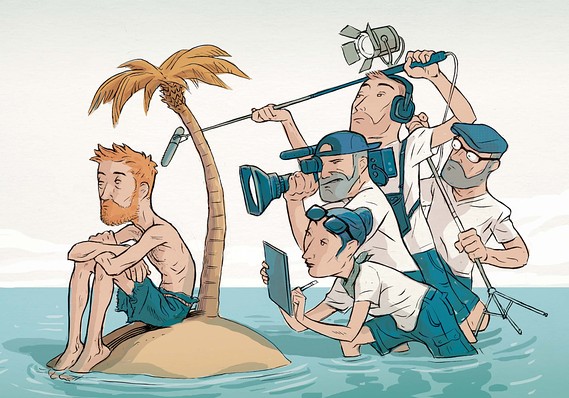
REALITY verses FAKE….and why it’s SO addictive
Reality television is a huge part of our television viewing culture. It may be clear to many adults that not all is “real” in the world of reality TV. However, how do children and adolescents understand the world of reality TV? What could reality TV be teaching adolescent girls, in particular, about what is valued in the real world? And, how does it affect their attitudes, beliefs, self-image and behaviour?
Keeping Up with the Kardashians features the life of a family that spends a great deal of time and money on appearance, with a consequent rise in fame and popularity of its girls and women. Their Instagram pages, often followed by young fans of the show, are full of “selfies,” bikini and modelling photos. Photos that feature their “ordinary” everyday lives are highly sexualised, including the pages of the youngest teenage members of the family. This practice perpetuates the notion that “real” people gain popularity and happiness by focusing on their appearance—and to be successful, personal image, even at a very young age, should be laced with sexuality.
Reality TV typically reveals inappropriate behaviour within peer groups, often promoting interpersonal drama, aggression and bullying. For example, women in The Real Housewives franchise gossip, back-stab and behave aggressively, condescending and catty toward one another. The expression of relational aggression between females seen across several reality shows gives girls the idea that gossiping is a normal part of a female relationship, that it’s in girls’ natures to be divisive and competitive with one another, and that being mean earns respect and is often necessary to get what you want.
While reality TV seems to place emphasis on sex appeal, materialism, hard-partying and relational aggression, it does not emphasise the fact that many women on these shows are highly intelligent and successful in their real lives.
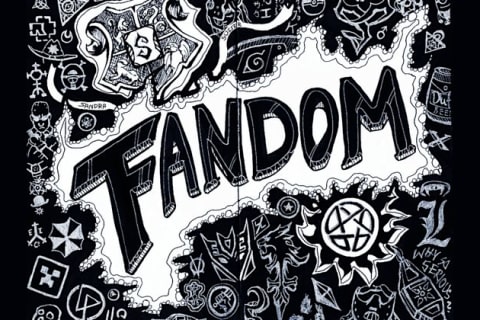
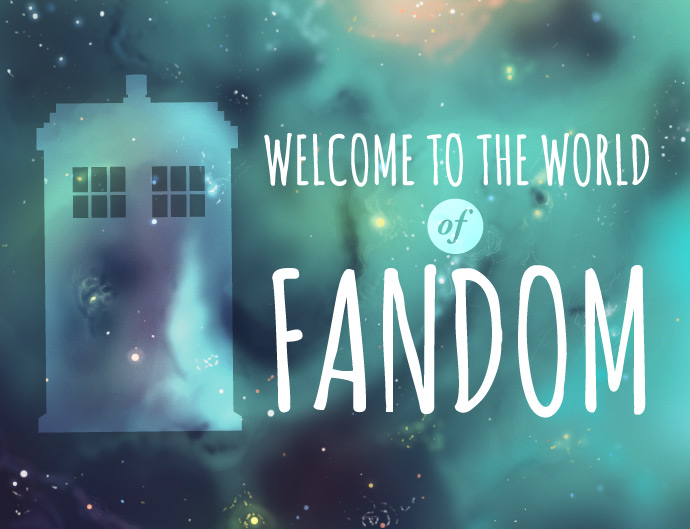
FANDOMS
Fandoms create alternative community pages for people of the things they are obsessed with. Everyone is a fan of something. Imagine yourself starting a Internet Page, Blog, Podcast on your favourite topic and allowing the community to share and respond their passions about the same topic. Now with the growth of connected media technologies, we see communities that have large geographical distances between them sharing through Fandom accounts.
Some fans are so passionate about their texts, that they become critical about them. Take, ‘Game of Thrones’, for instance. The Fandom base for this become alive and critical when the final series went to air. The outburst and outrage from fans, was seen across the globe, having producers of this media text questioning their final decisions.
Now critical mass of these Fandoms can be seen having an impact on production, distribution and reception. Producers of media texts are taking in account the opinions of these groups before deciding the story arcs of characters and the narrative’s resolution.
Producers rely on texts with large Fandoms to guide them on future directions of the media product. Because of their passion, Fandoms can often be the biggest critics of these works. Often this brings up questions of authorship. If creators are just giving the fans what they want, the question arises as to whose text it really is. Fandoms often try and claim ownership over as much of the product as possible.
FAN ENTITLEMENT: This fight for control over media products sometimes leads to, ‘fan entitlement’ – the idea that fans feel they are owed something from media creators. Fans are more likely to make demands and have strong opinions of media products. For example, where they produced and where they will be distributed. They can create online petitions, hastag questions to gain a sense of popularity and support for ideas.
Copyright – Heinemann Media Text (3rd edition)
SAC or EXAM question where you could use fandoms as a topic:
8 marks
Discuss the dynamic and changing relationship between the media and audiences. In your response refer to one of the following:
- The Individual
- Globalised Media Institutions.
6 marks
Evaluate the impact of one ethical or legal issue on the PRODUCTION and CONSUMPTION or RECEPTION of a media product.
Well written response: By Student – About FANDOMS
Q1. Identify and describe ONE issue relating to the way in which the media is used today by globalised media institutions and individuals. – 6 marks –
Globalization has allowed communication platforms to be widely accessible and readily available to various demographics and geographic’s. Social media platforms and global media institutions have enhanced communication globally. Platforms such as Facebook and Twitter have enabled greater production, distribution and consumption of media content. ‘Fan Fiction’ is a term used to describe a form of literature in which is related to a specific media text. It involves passionate fans within audiences that consume media texts such as film narratives and evolve it into a narrative that satisfies their personal likes, expectations, attitudes and prior experiences. Online platforms designed to facilitate global communication embrace ‘fan fiction’ in enabling individuals to use it to produce, publish and distribute to mass audiences. An issue that can and has greatly stemmed from the concept of ‘fan fiction’ is copyright. The television series ‘Game of Thrones’ is a clear example of a text in which has may fans and countless fan fiction stories that are comprised in a similar way to the original but satisfy the audience immensely. Producers of texts such as ‘Game of Thrones’ may identify the ideas, stories, narratives and expectations that are embedded into this fiction and use it to create a new episode or season that they now know will satisfy and meet their target audiences expectations, yet in reality poses the issue of whose idea and creation it was initially, which can breech copyright laws.
Sonic the Hedgehog pushed back release date after public backlash.
Paramount Pictures is pushing its Sonic the Hedgehog movie back three months, from Nov. 8 to Valentine’s Day. The delay follows fan criticism over the appearance and design of the titular blue hedgehog — particularly his teeth and lean legs.
Director Jeff Fowler tweeted that it was “taking a little more time to make Sonic just right.”
Earlier this month, Fowler took to Twitter to address the backlash following the trailer release. “The message is loud and clear… you aren’t happy with the design & you want changes,” he tweeted. “It’s going to happen. Everyone at Paramount & Sega are fully committed to making this character the BEST he can be…

Alternate ending, ‘How I met your mother’.
Every so often, there are television controversies that shake the entire internet. In April of this year, one of the biggest ones made it’s way into cyberspace: the shocking finale to the nine seasons of How I met your mother. Though the entire show was working up to how unlucky-in-love Ted Mosby met the mother of his children, the titular mother ending up passing away in the finale. In the epilogue, Ted proceeded to get back together with Robin far into the future. Fans were livid, and angry tweets ruled the internet for a few days. Then, like all television scandals, it eventually died down. Until now.
On September 5th, the alternative ending for the series was posted, where Ted did settle down with the mother, no one died, and it seemed that all was well in sitcom world. Tweets, facebook status, and tumblr posts were made in argument of how this was a much better ending than the one that actually aired on live television. I, however beg to differ.
Extract from: reddit
For those of you who don’t know, there were two endings originally created for the show. The first is the one we see on air where Tracy dies and it’s implied that Ted and Robin hook up.
The alternate, however, uses similar footage to the real ending but with different narration. And the turning point, TRACY DOESN’T DIE! The alternate ending also features a much more uplifting song that can be found in the show’s second album: How I Met Your Music: Deluxe
So my question is, which did you prefer and why? IMO I liked the alternate better, since I’ve always been more Yellow Umbrella than Blue French Horn, but that’s just me.
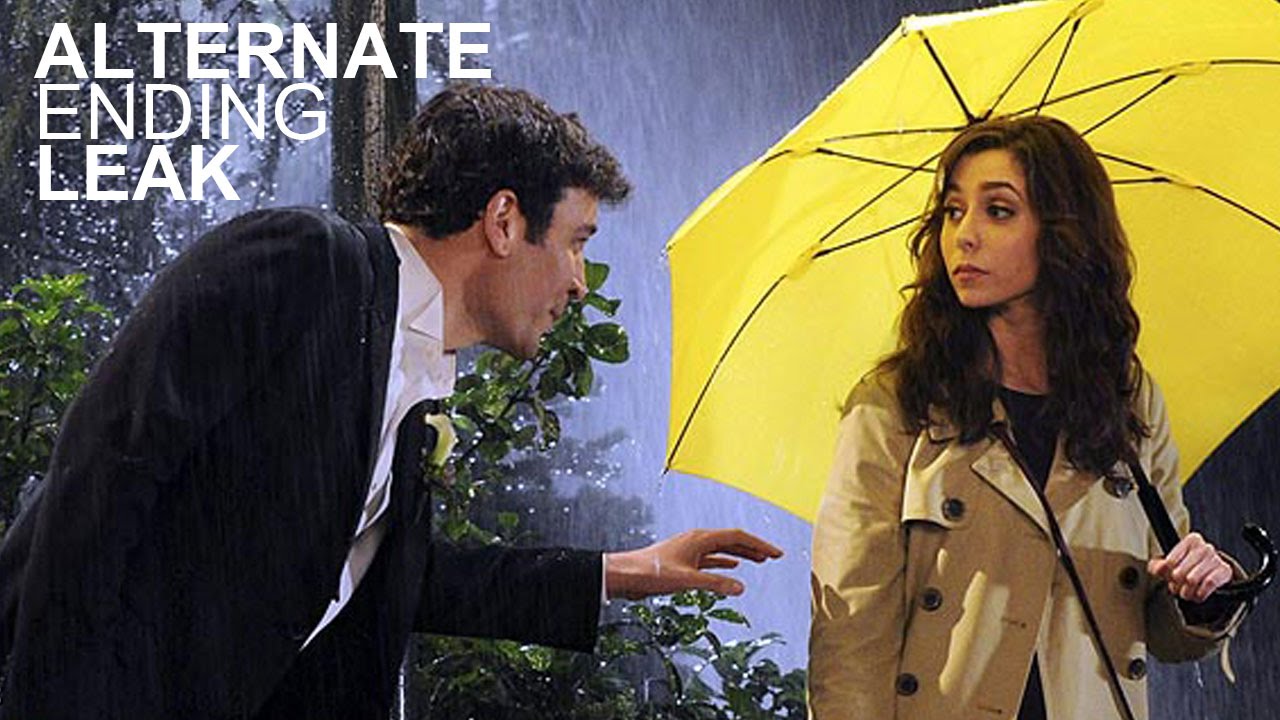

Kylie Jenner Tweets about Snapchat and the damage is done
Article by: Vouge
If you were looking for evidence that the Kardashian empire is actually a global panopticon capable of shaping the fate of the world with the push of a “post” button, one tweet from Kylie Jenner looks like it just cost Snapchat $1.3 billion. Just a few weeks after breaking internet records with her surprise baby announcement, Jenner is at it again, this time voicing consumer frustration (or new mom blues) that turned into, of course, market panic. “Sooo does anyone else not open Snapchat anymore? Or is it just me . . . ugh this is so sad,” she wrote on Wednesday. Shortly after, shares in Snapchat parent company Snap fell as much as 8.5 percent, with the SNAP stock closing down by a harrowing 6 percent at the end of Thursday.
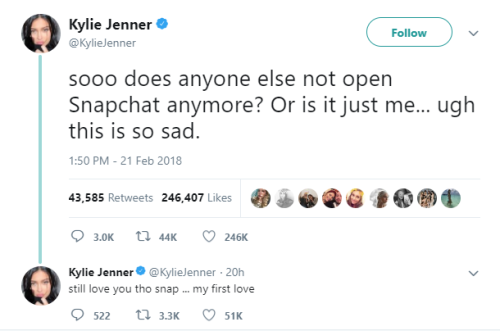
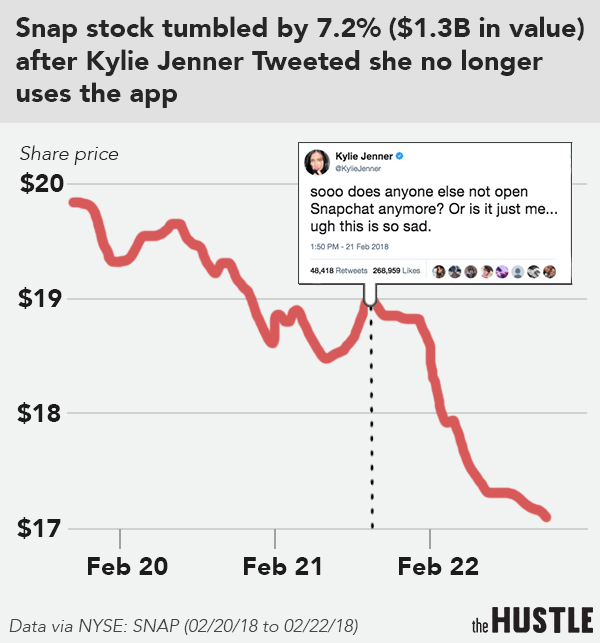
FOMO - The Fear of Missing Out
FOMO in Isolation
Fear of missing out (FOMO) is a social anxiety stemmed from the belief that others might be having fun while the person experiencing the anxiety is not present. It is characterised by a desire to stay continually connected with what others are doing.
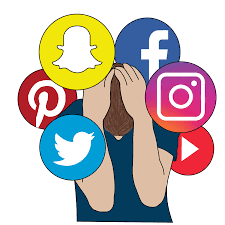
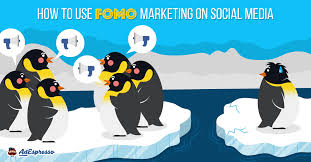
Using FOMO as a persuasive technique
Marketing and Advertising agencies have been using FOMO as a technique to persuade audiences for years. MacDonalds do this all the time by including toys in their Happy Meals. FOMO has recently reared up again with the use of Social Media. We can all relate to the feeling of being left out or feeling like we have missed something good after seeing something on Social Media. The ripple effect on young adults and teens increases when they are actively trying to connect and reply to the Snapchat messages, Text messages, Facebook notifications, Instagram DM’s…..and the list goes on.
